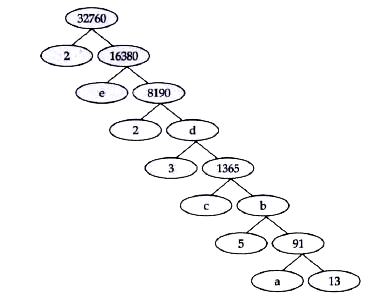Read the following text and answer the following questions on the basis of the same:
Gynoecium, is the female reproductive part of the flower. It may consist of a single or more than one pistil. These pistil may be free or fuse. Each pistils has three parts, stigma, style and ovary. Ovary has an ovarian cavity, which has one or many chambers or locules. The placenta is located inside the ovarian cavity. Megasporangia or ovules arise from the placenta.
Which among the following cell is binucleate in an embryo sac?
Antipodal cell
Central cell
Synergid
Female gamete
The correct Answer is:B
To answer the question regarding which cell is binucleate in an embryo sac, let's break down the information provided step by step.
1. Understanding the Gynoecium: The gynoecium is the female reproductive part of the flower, consisting of one or more pistils. Each pistil has three main parts: stigma, style, and ovary.
2. Structure of the Ovary: The ovary contains an ovarian cavity that may have one or more chambers, called locules. Inside the ovarian cavity, the placenta is located, from which megasporangia or ovules arise.
3. Embryo Sac Structure: The embryo sac is formed within the ovule and is typically oval in shape. It consists of several cells organized in a specific manner.
4. Cell Types in the Embryo Sac:
- At the chalazal end, there are three cells known as antipodals. Each of these cells is uninucleate, meaning they contain only one nucleus.
- At the micropilar end, there are five cells: two synergids and one egg cell. Both synergids and the egg cell are also uninucleate.
- The central cell is located in the middle of the embryo sac and is unique because it contains two nuclei, making it binucleate.
5. Identifying the Binucleate Cell: From the descriptions:
- Antipodal cells: Uninucleate
- Synergids: Uninucleate
- Egg cell: Uninucleate
- Central cell: Binucleate
6. Conclusion: The only cell in the embryo sac that is binucleate is the central cell.
Final Answer:
The cell that is binucleate in an embryo sac is the central cell.
---
- At the chalazal end, there are three cells known as antipodals. Each of these cells is uninucleate, meaning they contain only one nucleus.
- At the micropilar end, there are five cells: two synergids and one egg cell. Both synergids and the egg cell are also uninucleate.
- The central cell is located in the middle of the embryo sac and is unique because it contains two nuclei, making it binucleate.
- Antipodal cells: Uninucleate
- Synergids: Uninucleate
- Egg cell: Uninucleate
- Central cell: Binucleate
The cell that is binucleate in an embryo sac is the central cell.
Similar Questions
Knowledge Check
- Question 1 - Select One
Read the following text and answer the following questions on the basis of the same:
Gynoecium, is the female reproductive part of the flower. It may consist of a single or more than one pistil. These pistil may be free or fuse. Each pistils has three parts, stigma, style and ovary. Ovary has an ovarian cavity, which has one or many chambers or locules. The placenta is located inside the ovarian cavity. Megasporangia or ovules arise from the placenta.
In which of the following plants the number of ovules in an ovary is one ?AMangoBOrchidsCWater melonDPapaya - Question 2 - Select One
Read the following text and answer the following questions on the basis of the same:
Gynoecium, is the female reproductive part of the flower. It may consist of a single or more than one pistil. These pistil may be free or fuse. Each pistils has three parts, stigma, style and ovary. Ovary has an ovarian cavity, which has one or many chambers or locules. The placenta is located inside the ovarian cavity. Megasporangia or ovules arise from the placenta.
Flowers with both androecium and gynoecium are called :ABisexual flowersBAntherCUnisexual flowersDAndrogynous - Question 3 - Select One
Read the following text and answer the following questions on the basis of the same:
Gynoecium, is the female reproductive part of the flower. It may consist of a single or more than one pistil. These pistil may be free or fuse. Each pistils has three parts, stigma, style and ovary. Ovary has an ovarian cavity, which has one or many chambers or locules. The placenta is located inside the ovarian cavity. Megasporangia or ovules arise from the placenta.
A multicarpellary, syncarpous gynoecium is found in:APapaverBBrinjalCTomatoDAll
Stigma, Style, Ovary , Anther
View SolutionRead the following text and answer the following question on the basis of the same.
On a weekend Rani was playing cards with her family. The deck has 52 cards. If her brother drew one card.
Find the probability of getting a spadeView SolutionRead the following text and answer the following question on the basis of the same.
On a weekend Rani was playing cards with her family. The deck has 52 cards. If her brother drew one card.
Find the probability of getting a face cardView SolutionRead the following text and answer the following questions on the basis of the same :
Amit has a packet of Candies .It consists of 288 candies .He arranges the candies in a way that first row contains 3 candies ,second row has 5 and third row has 7 and so on .
How many rows are there ?View SolutionRead the following text and answer the following question on the basis of the same.
On a weekend Rani was playing cards with her family. The deck has 52 cards. If her brother drew one card.
Find the probability of getting a jack of heartsView Solution


